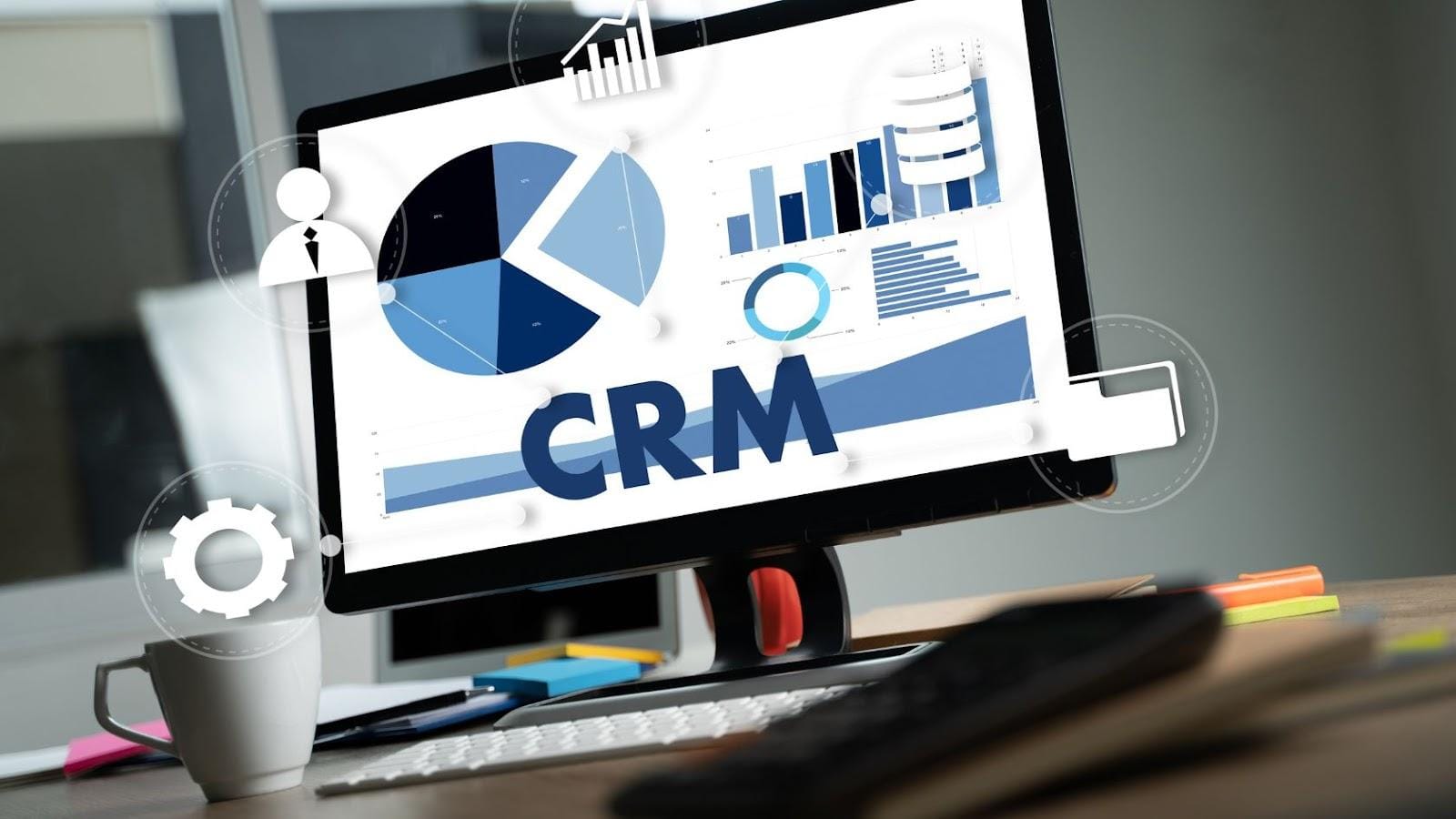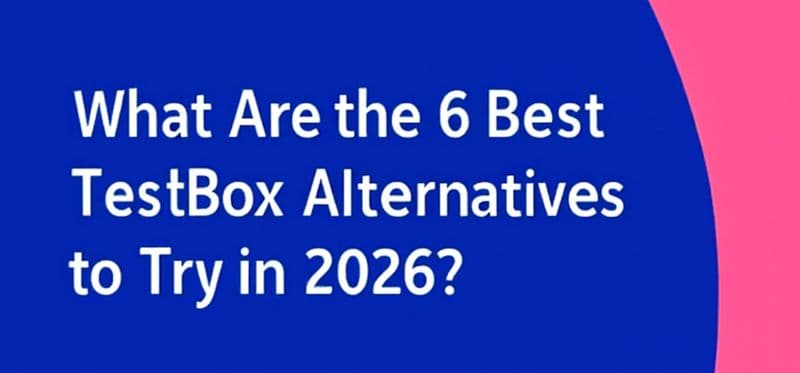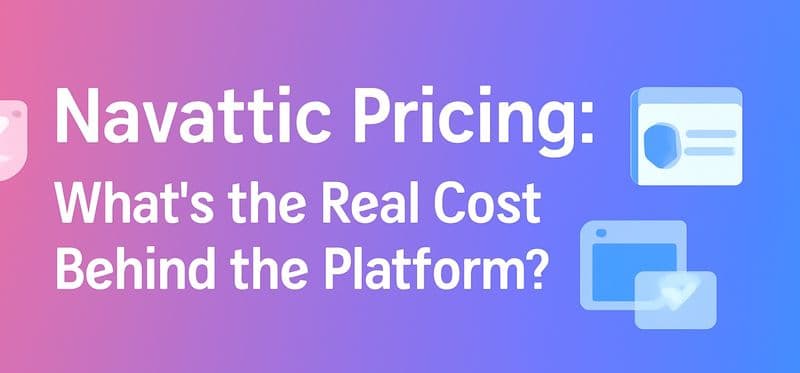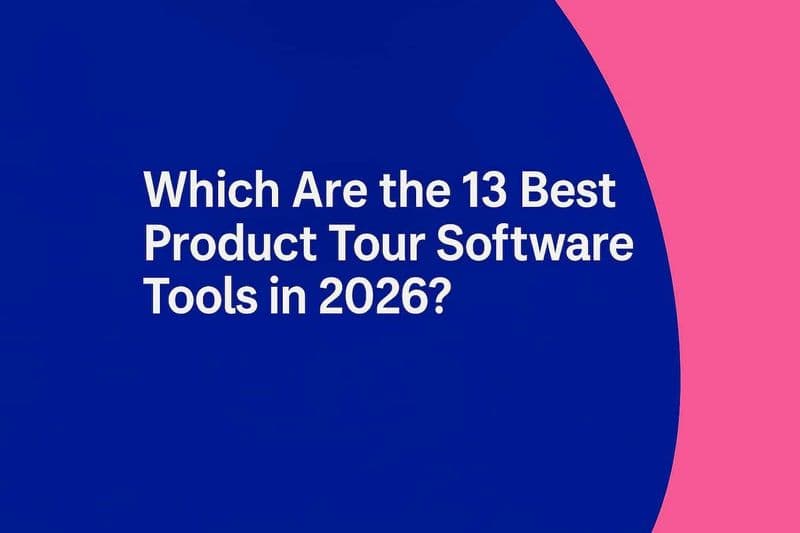You wouldn’t launch a new SaaS product without a proper onboarding flow, so why expect sales reps to close deals without the right support? A great product alone won't win customers; sales teams need a structured, data-driven enablement strategy that helps them sell confidently.
Too often, companies flood reps with information but fail to make it accessible when it matters most. The result? Missed opportunities, stalled deals, and inconsistent messaging. A strong sales enablement strategy changes that. It ensures reps have the right content, insights, and coaching when needed.
Think of it as a playbook that turns guesswork into a repeatable, scalable process. Whether streamlining onboarding, refining messaging, or leveraging AI-driven insights, enablement isn't just support—it's a competitive advantage.
Let's dive into how to build a high-impact sales enablement strategy that doesn't just help your team sell but makes selling easier, faster, and more effective, ultimately enhancing your sales enablement efforts. And that's not all! Throughout the blog, we will also learn why sales enablement strategy is essential, its benefits, and its practices.
What Is a Sales Enablement?
Ever seen a sales rep fumble through a pitch, clicking through endless slides while the prospect zones out? Painful, right? That's what happens when sales enablement is an afterthought instead of a strategy.
Imagine a rep walking into that same call armed with the right insights, killer messaging, and a deep understanding of the buyer's needs. Instead of guessing, they guide the conversation, address objections before they arise, and confidently close deals.
Sales enablement isn't about drowning reps in content they'll never use—it's about giving them exactly what they need when they need it. The right sales enablement technology, tools, training, and alignment with marketing ensure that every touchpoint with a prospect is intentional, valuable, and persuasive.
Because in sales, winging it isn't a strategy. Winning it is.
Why a Sales Enablement Strategy Matters?
Have you ever felt like your sales team is working hard but still missing targets? The problem isn't effort—it's a lack of the right support system. Without a clear sales enablement initiatives strategy, reps waste time searching for content, marketing creates unused materials, and potential deals slip away. A structured approach ensures that every sales interaction is impactful, helping teams sell confidently and consistently.
1. Aligns Sales and Marketing for Cohesion
Sales and marketing misalignment leads to disjointed messaging, wasted content, and lost opportunities. A strong enablement strategy bridges the gap, ensuring both teams work together to:
Create targeted content that resonates with buyers
Improve lead nurturing and conversion rates
Deliver a consistent and engaging customer journey
2. Enhances Sales Performance and Productivity
Without proper resources, sales reps spend more time on admin work than selling. An optimized strategy helps teams:
Eliminate time-wasting tasks and focus on closing deals
Access relevant sales content instantly
Follow structured playbooks that drive success
3. Shortens Sales Cycles and Increases Win Rates
A well-equipped sales team moves faster, overcomes objections easily, and closes more deals. The right enablement strategy:
Reduces time spent on back-and-forth follow-ups
Increases confidence in handling customer concerns
Creates a seamless experience that moves buyers to a decision quicker
What Makes a Sales Enablement Program Successful?
A strong sales enablement program isn't just about tools—it's about empowering sales teams to close more deals confidently. Reps waste time, struggle with messaging without the proper support and miss key opportunities. Here are the core pillars of a successful strategy.
1. Ongoing Training and Real-Time Coaching
Sales isn't a one-and-done skill—it requires continuous learning. A winning enablement program provides structured training, hands-on coaching, and real-world scenarios to help reps refine their specific skills and approach. Personalized feedback and data-driven insights turn average sellers into top performers.
2. Data and analytics for strategic decisions
Ever feel like sales strategies are built on guesswork? With the correct data, they don't have to be. By tracking sales performance, customer interactions, and pipeline health, sales enablement leaders can spot trends, predict buyer behavior, and fine-tune strategies for better results. The key? Use analytics to work smarter, not harder.
3. Organize Sales Content So Reps Use It
If your sales team constantly searches for the right case study or pitch deck, your content isn't working. A strong enablement program keeps all sales materials organized, easy to find, and always up to date so reps can quickly grab what they need—when they need it.
4. Make the Sales Process Smoother and Faster
A complicated sales process slows deals down. Standardizing workflows, automating repetitive tasks, and setting transparent best practices help reps confidently move through the pipeline. The result? Fewer bottlenecks, more closed deals, and a faster sales cycle.
5. Integrate the Right Tech (Without Overcomplicating It)
Sales tools should help, not create extra work. When CRM systems, analytics platforms, and enablement tools work together seamlessly, sales teams get better insights, smoother workflows, and a more streamlined selling experience. The right tech stack should simplify processes, not slow them down.
How to Develop a Sales Enablement Strategy That Drives Results
Creating a successful sales enablement strategy isn't about following a one-size-fits-all template—it's about aligning your teams, optimizing resources, and making selling more effective. Here's where to start:
Step 1: Evaluate Your Current Sales Process
Before making improvements, you need to understand what's working and what's not. Look at your sales metrics, team feedback, and customer journey insights. Are reps struggling to find content? Are deals stalling at the same stage? Identifying these gaps will help you build a strategy that actually moves the needle.
Step 2: Define your sales and marketing goals
Understanding clear objectives is very important for a good sales enablement strategy. If sales and marketing aren't working toward the same objectives, you'll always have disconnects. Set realistic revenue targets and measurable KPIs that align both teams. Think about it this way: If marketing's goal is lead generation, but sales are focused on closing enterprise deals, there's a mismatch. Instead, ensure both teams agree on lead quality, pipeline growth, and conversion metrics so that every effort pushes the business forward.
Step 3: Understand Your Target Audience Inside Out
You wouldn't sell a high-performance sports car to someone looking for a fuel-efficient sedan, right? The same goes for your sales strategy. Dig deep into your buyer personas, challenges, and decision-making process. Refine your approach using real customer insights, past interactions, and behavior analytics. When you understand what matters most to your buyers, your messaging becomes more relevant, and your content resonates better.
Step 4: Create Sales Content That Helps Reps Close Deals
Not all sales content is created equal. If your reps still use outdated decks or generic PDFs, they miss opportunities. Create content that speaks to different buyer personas and sales stages. Case studies that show real-world impact, product comparisons that simplify decision-making, and interactive tools that engage prospects all help move deals forward faster. A content management system ensures your reps can access and share the right training materials at the right time—because no one should be scrambling for the latest pitch deck five minutes before a call.
Step 5: Choose the Right Sales Enablement Platform
Your sales enablement platform is like the engine of your strategy—it powers everything from content management to training and analytics. But picking the wrong one is like buying a sports car with no fuel efficiency—it looks great but doesn't get you far. Look for an intuitive, scalable platform that integrates with your existing tools (CRM, analytics, training modules, etc.). The right platform should make life easier for your sales team, not add another layer of complexity.
Step 6: Train your sales team on best practices
Even the best sales enablement strategy falls short if your team isn’t equipped to execute it. Ongoing training and training sessions ensure sales reps master the sales process, confidently handle objections, and adapt to evolving buyer needs. Regular coaching sessions, interactive workshops, and real-world practice make all the difference. A rep who knows the product and understands how to connect with buyers will consistently outperform one relying on guesswork. Keep training sessions continuous, not just a one-time onboarding session, so your team stays sharp, motivated, and ahead of the competition.
Step 7: Continuously Measure and Improve Your Strategy
Sales enablement isn't a "set it and forget it" process—it's an ongoing cycle of testing, learning, and refining to boost sales productivity with the right enablement resources. Track key metrics like conversion rates, deal velocity, and customer engagement to see what's working and holding your team back. If your reps struggle to close deals, maybe your content isn't hitting the right pain points. Check in with your sales team regularly—they're on the front lines, so their insights are invaluable.
What Are the Best Practices of Implementing a Sales Enablement Strategy?
A well-designed and well-executed effective sales enablement strategy provides the necessary tools, resources, and insights to enhance sales performance and drive revenue growth. Here are some other key benefits of implementing an effective sales enablement strategy:
1. Set Clear and Actionable Goals
A sales enablement strategy without clear goals is like a ship without a compass—it won't get you where you need to go. Define specific, measurable, and realistic objectives that align with your sales and business goals. Instead of vague targets like "increase sales," set SMART goals such as "reduce sales cycle length by 15% in six months" or "improve content utilization by 30%." These benchmarks give your team direction and make success measurable.
2. Get Key Stakeholders Involved Early
Sales enablement isn't just a sales initiative—it requires alignment across sales, marketing, and leadership in the content creation process. When sales executives, managers, and marketers collaborate from the start, the strategy becomes more effective. Sales reps provide real-world insights and updated product information, marketing ensures relevant content, and leadership sets expectations and direction. Regular check-ins, shared KPIs, and open communication foster a team-driven approach that increases adoption and impact.
3. Continuously Evaluate and Optimize
Sales enablement isn't a "set and forget" process—it requires constant refinement to maximize the business impact of sales enablement on business results. Track key performance indicators (KPIs) like quota attainment, deal velocity, and content engagement to see what's working and what's not. Gather feedback from sales teams, analyze data, and make necessary adjustments. The best sales enablement programs are agile, evolving alongside market shifts and sales challenges.
4. Leverage CRM and Data for Smarter Enablement
Your CRM is the backbone of sales enablement, offering insights into rep performance, deal progression, and engagement metrics. Use AI and automation to provide real-time sales coaching and data-driven training, ensuring reps get the right guidance at the right moment.
5. Onboard Reps While They Sell
Instead of pulling reps away for training, integrate onboarding into their workflow. Allow them to engage with prospects early while hitting key milestones like booking meetings and sending proposals—accelerating ramp time and revenue impact.
6. Deliver Training in Bite-Sized, Actionable Formats
Reps don't need lengthy sessions—they need quick, relevant insights at the moment of action. Use CRM alerts to deliver just-in-time learning, like how to format a quote or handle objections, keeping training practical and retention high.
7. Build a Sales Enablement Content Hub
Reps need quick access to materials that help them close deals effectively. A centralized content hub ensures they always have the right resources at the right time. Customer stories build trust by showcasing real success, while product decks and demos highlight key features and solutions. E-books and datasheets educate buyers, and competitive intelligence helps reps position their offerings strategically.
What Are Must-Have Sales Enablement Tools to Supercharge Your Team?

The right tools can make or break your sales enablement strategy. Without them, your team is stuck juggling spreadsheets, hunting for content, and guessing what works. With them, they have everything they need—right when they need it—to close deals faster and wiser. Here's what you should have in your sales enablement stack:
🔹 CRM Systems: The Sales Command Center
Imagine tracking every customer interaction, lead, and deal in one place—without digging through endless emails. Customer relationship management (CRM) platforms like HubSpot CRM give your reps a 360-degree view of prospects, automate follow-ups, and provide real-time insights to keep deals moving forward.
🔹 Content Management Systems: Sales Reps' Best Friend
Have a sales rep struggled to find the latest case study or pitch deck? That's where a solid CMS like WordPress or Contentful comes in. It keeps all sales materials updated, organized, and accessible so reps can deliver the right content at the right time.
🔹 Sales Analytics Tools: Data-Driven Selling Made Easy
Gut feelings don't close deals—data does. Platforms like Tableau and InsightSquared help sales leaders track performance, spot trends, and refine strategies. Whether it's analyzing win rates or optimizing messaging, these tools ensure your team is making informed decisions.
🔹 Training & Onboarding Platforms: Fast-Track Sales Success
New hires shouldn't take months to ramp up. Tools like Lessonly and MindTickle deliver interactive training and continuous coaching, ensuring reps master the pitch, handle objections, and stay sharp on product knowledge—all in record time.
🔹 Demo Experience Platforms: Make Every Pitch Unforgettable
A great demo isn't just a walkthrough—it's an experience. Platforms like SmartCue let you create tailored, interactive demos highlighting precisely what matters to each prospect. Plus, you can track demo engagement to refine your approach and close deals faster.
Why SmartCue is a Game-Changer for Sales Enablement
Every sales conversation is an opportunity—but only if you can capture and keep your prospect's attention. SmartCue makes that easier by transforming static demos into interactive, personalized experiences that resonate.
With real-time analytics, SmartCue helps sales teams tailor demos on the fly, address specific pain points, and keep prospects engaged with compelling, relevant content. No more generic walkthroughs—just high-impact, data-driven presentations that make an impression.
SmartCue also seamlessly integrates into your existing sales stack, ensuring your reps spend less time juggling tools and more time closing deals. Whether you're scaling sales efforts, refining pitches, or optimizing engagement, SmartCue delivers unmatched agility and precision in your sales enablement strategy.
Experience the power of SmartCue firsthand. Try it free for 14 days and see how it revolutionizes your sales approach.
Final Takeaway: Elevate Sales with the Right Enablement Strategy
A winning sales enablement strategy isn't just about tools but alignment, execution, and impact throughout the buyer’s journey. When sales and marketing work together seamlessly, reps are empowered with the right content, training, and technology to enhance buyer engagement, the sales experience, and engage buyers effectively.
The key? Leverage the right revenue enablement platform to streamline processes, personalize outreach, and drive smarter selling by modeling seller behavior. Done right, revenue enablement doesn't just support your team—it transforms them into high-performing closers, accelerating revenue growth and sharpening your competitive edge, ultimately enhancing the customer experience.
Now's the time to invest in a strategy that fuels efficiency, engagement, and results.
Frequently Asked Questions
What is the first step in creating a sales enablement strategy?
To begin your sales enablement strategy, look closely at your current sales enablement buying process and overall sales enablement process. Knowing where you stand is important. It helps you find gaps and opportunities to improve your work. This first step builds a solid base for a successful sales enablement journey.
How does sales enablement align sales and marketing teams?
Sales enablement helps sales and marketing teams communicate better and share information through a dedicated sales enablement manager and sales enablement team. This teamwork leads them to focus on common goals. As a result, they generate more leads and convert them at higher rates. When these teams align well, they create a strong strategy that boosts revenue potential.
What are the essential tools for sales enablement?
To help boost sales, you need important tools. CRM systems help track leads. Marketing automation platforms let you run targeted campaigns. Content management tools let you create and share sales materials. These tools make work easier, improve teamwork, and support revenue growth.
How often should a sales enablement strategy be reviewed?
Sales enablement strategies need to be checked often. This helps make sure they match business goals and changes in the market. It also helps correct any sales enablement strategy mistakes you have made over time. Many companies do this every three months, but you can change it based on your company's needs and industry shifts. Checking them regularly makes them more effective and keeps them current.
Can small businesses benefit from sales enablement?
Sales enablement can help small businesses increase sales, unite teams, and improve interaction with potential customers. It's important to find the main benefits of using a unique strategy that fits the needs of small businesses. With smart sales enablement plans, you can grow your business.
What are the common challenges and solutions in sales enablement?
Adopting a sales enablement strategy comes with challenges that can be addressed. Resistance to new tools can be overcome by involving the team in decisions, offering training, and sharing success stories. Continuous engagement requires regular feedback, ongoing training, and performance reviews. To avoid inconsistent messaging, create standardized guidelines and ensure all teams use the same content through regular updates. Misalignment between sales and marketing can be solved by fostering collaboration with joint meetings and shared goals. Lastly, ensure full adoption of sales enablement software with proper training and feedback loops.


